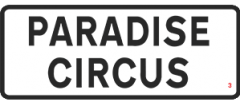Day One (24hrs) 18th Sept 2009 starting 7pm.
Inspired by the statement below, the PhD show’s mythological think-tank investigation, conducted by Harry Palmer, seeks to discover the relationship between the banana plantation and lost civilisation concerning the Hawaiian Mauna Loa tribesmen and women. Mythological hoaxes have been reported suggesting that banana worship and ecological disaster were aligned to the Indian rope trick in which the Darknosis Scientific team sought to define and clarify on their 1917 expedition to this Pacific Ocean Island.

Previous investigations lead by Japanese scientists in 1994.
Statement by Edward Percival N. Spoonhandle – geologist prior to the 1917 expedition:
‘Painting, drawing – that is, the process of meditation and the ability of transmutational story telling, time and space alteration – seen and heard through the senses – is a primitive and ancient instinct.
I do believe that the Mauna Loa cave painters and sand drawers employed the use of colour and lines via the mobilisation of arms, feet, hands, mouth spray (wind power) – sticks, fingers, dyes and animal inks – the rattle of drums, voice, dancing and chanting creates the psychedelic hypnotism, enchantment. The Illumination of fire….Ghostly apparitions appeared. Gods were formed – some stayed for a few seconds, an hour, others for thousands of years. Their demons haunted themselves! Superstition emerged and as the short supply of consumable vegetation severely decreased (why, we are unsure) – the last substantial evidence of human subsistence purports to an increased intake of banana and high intakes of potassium.
The Mauna Loa divided experiences into pockets of memory time. The Darknosis team believe that this significant civilisation witnessed disturbing solar movement, tide changes, thermal alteration and temperature fluctuation. A departure of flight and fantasy, we are unsure.’

PhD think tank investigation from inside the think tank
Find out more at The PhD show: On until 25th Sept at The Edge, Birmingham. Please visit website for details and directions: www.phdshow.com


